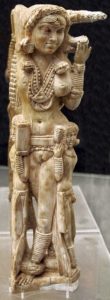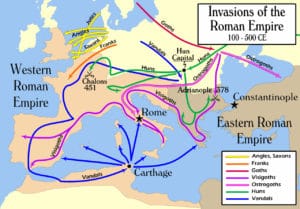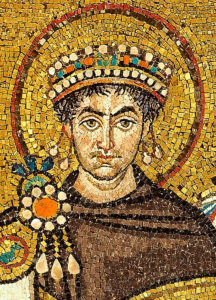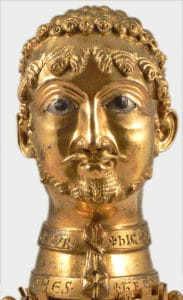
In a slow decline since the third century AD, the Empire split in two in 395 AD. The Western Empire, under the pressure of the barbarian invasions, eventually dissolved in 476 AD when its last emperor, Romulus Augustulus, was deposed by the Germanic chief Odoacer.

The Eastern half of the Empire survived for another thousand years.
Middle Ages:
After the fall of the Western Roman Empire, Italy fell under the power of Odoacer’s kingdom, and, later, was seized by the Ostrogoths, followed in the 6th century by a brief reconquest under Byzantine Emperor Justinian.

The invasion of another Germanic tribe, the Lombards, late in the same century, reduced the Byzantine presence to the rump realm of the Exarchate of Ravenna and started the end of political unity of the peninsula for the next 1,300 years. Invasions of the peninsula caused a chaotic succession of barbarian kingdoms and the so-called “dark ages”. The Lombard kingdom was subsequently absorbed into the Frankish Empire by Charlemagne in the late 8th century. The Franks also helped the formation of the Papal States in central Italy. Until the 13th century, Italian politics was dominated by the relations between the Holy Roman Emperors and the Papacy, with most of the Italian city-states siding with the former (Ghibellines) or with the latter (Guelphs) from momentary convenience.
The Germanic Emperor and the Roman Pontiff became the universal powers of medieval Europe. However, the conflict for the investiture controversy (a conflict over two radically different views of whether secular authorities such as kings, counts, or dukes, had any legitimate role in appointments to ecclesiastical offices) and the clash between Guelphs and Ghibellines led to the end of the Imperial-feudal system in the north of Italy where city-states gained independence. It was during this chaotic era that Italian towns saw the rise of a peculiar institution, the medieval commune. Given the power vacuum caused by extreme territorial fragmentation and the struggle between the Empire and the Holy See, local communities sought autonomous ways to maintain law and order. The investiture controversy was finally resolved by the Concordat of Worms. In 1176 a league of city-states, the Lombard League, defeated the German emperor Frederick Barbarossa at the Battle of Legnano, thus ensuring effective independence for most of northern and central Italian cities.

Italian city-states such as Milan, Florence and Venice played a crucial innovative role in financial development, devising the main instruments and practices of banking and the emergence of new forms of social and economic organization. In coastal and southern areas, the maritime republics grew to eventually dominate the Mediterranean and monopolise trade routes to the Orient. They were independent thalassocratic city-states, though most of them originated from territories once belonging to the Byzantine Empire. All these cities during the time of their independence had similar systems of government in which the merchant class had considerable power. Although in practice these were oligarchical, and bore little resemblance to a modern democracy, the relative political freedom they afforded was conducive to academic and artistic advancement. The four best known maritime republics were Venice, Genoa, Pisa and Amalfi; the others were Ancona, Gaeta, Noli, and Ragusa. Each of the maritime republics had dominion over different overseas lands, including many Mediterranean islands (especially Sardinia and Corsica), lands on the Adriatic, Aegean, and Black Sea (Crimea), and commercial colonies in the Near East and in North Africa. Venice maintained enormous tracts of land in Greece, Cyprus, Istria and Dalmatia until as late as the mid-17th century.
